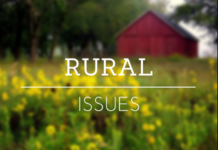MANHATTAN, Kan. – Once the current stretch of rainy days in Kansas slows, many homeowners will finally get their chance to mow the lawn.
They’re likely to find that it’s a bit taller than normal.
Kansas State University horticultural expert Ward Upham said it’s important to remember that you should not take off more than one-third of the grass blade at one time. So as the grass grows taller, set the mower blade as high as possible and bring it down in steps.
“If more than one-third is taken off, the plant reacts by using stored energy reserves to quickly send up new growth,” Upham said. “This reduces the amount of energy available for plants to deal with stress or damage done by insects or disease.”
Upham acknowledged it is not always possible to obey the “one-third rule.”
“In such cases, cut as high as possible, even though you may be taking off more than one-third of the blade,” he said. “Bring the height down gradually by cutting more often and at progressively lower heights until you reach the target height.”
Fertilizing Warm
Season Grasses
Upham said June is the time to fertilize such warm-season grasses as bermudagrass, buffalograss and zoysiagrass.
“These species all thrive in warmer summer weather,” he said, “so this is the time they respond best to fertilization.”
Upham added that nitrogen is the most important nutrient for each species:
Bermudagrass requires the most nitrogen, about 4 pounds per 1,000 square feet for the highest quality. “Either 3 or 2 pounds can be used for a lawn under lower maintenance,” he said. “If using 3 pounds, apply in early May, June and July. If applying fertilizer twice, the first should go down in early June and the second in mid-July.” Upham added that if homeowners are planning to apply four separate and equal applications, those should occur about four weeks apart beginning in early May, and the last application no later than Aug. 15. Any lawn fertilizer will work for bermudagrass.
Zoysiagrass grows more slowly and does not require as much nitrogen, only 1 ½ to 2 pounds per 1,000 square feet. Split the total into two applications, one in early June and again in mid-July. Lawn fertilizers with slow-release nitrogen are preferred over the quick-release variety.
Buffalograss requires the least nitrogen of all warm-season lawn species, generally 1 pound per 1,000 square feet. It can be done in one application in early June. Slow-release nitrogen is preferred, but quick-release is okay to use.
Upham and his colleagues in K-State’s Department of Horticulture and Natural Resources produce a weekly Horticulture Newsletter with tips for gardening and maintaining home landscapes. The newsletter is available to view online or can be delivered by email each week.
Interested persons can also send their garden- and yard-related questions to Upham at [email protected], or contact your local K-State Research and Extension office.




